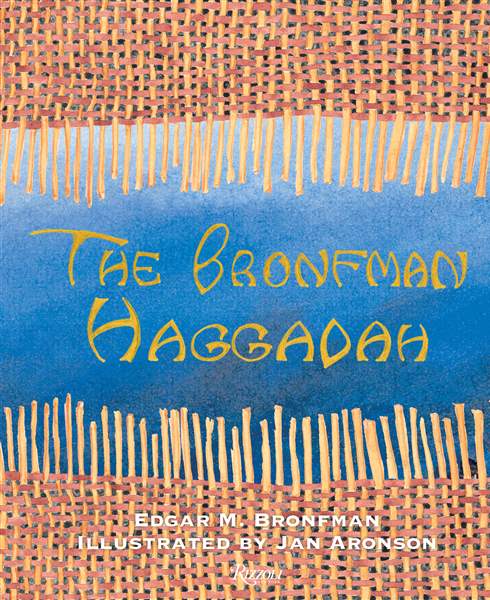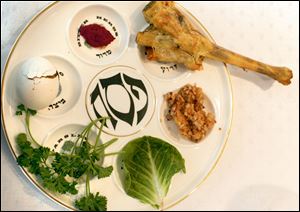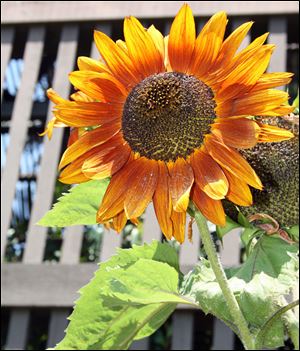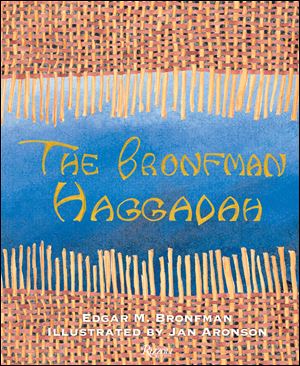
Jewish holiday rich in symbolism
3/29/2014
The Bronfman Haggadah app has texts to accompany the Seder meal, giving the order of the ritual and the story of the exodus.

A plate with the traditional foods that illustrate the Jews’ struggle for freedom.
Pesach, or Passover, is the traditional time to tell the story of how the Jews escaped slavery in Egypt and started their exodus to the promised land, and the Seder meal is the occasion to feast while hearing the tale. This year's Pesach period goes from sundown April 14 through April 22.
Seder holds its conventions loosely and can incorporate aspects of Judaism then and now. This year, to get a better understanding, you might attend the Interfaith Seder sponsored by the Jewish Community Relations Council of the Jewish Federation of Greater Toledo—it's not a full meal, but demonstrates the ritual and offers food samples. You can consider using the Bronfman Haggadah app for a home Seder and let your iPad lead you through the story. You can get some understanding of Jesus' Jewish observance and Christianity's ways with a combined Seder, communion, and spaghetti dinner at Unity of Toledo April 17. And you can memorialize the Holocaust with the addition of a sunflower to the setting.
“The thing about Passover itself” said Joel Marcovitch, CEO of the Jewish Federation, “is it's a reminder that we went from slavery to freedom, but also [a time] to be with family and friends and, really, what most festivals and cultural experiences are, being across religious boundaries.”

Sunflowers are a new way of remembering those lost in the Holocaust.
Interfaith Seder
“The Interfaith Seder is a great opportunity for anyone to come, from all different faiths and backgrounds, to understand what a traditional Jewish Seder is all about,” said Mr. Marcovitch. Rabbi Samuel Weinstein of Temple Shomer Emunim leads the demonstration that includes symbolism, foods, “and the story behind why we do it,” Mr. Marcovitch said. The Seder is April 9, 6 to 7:30 p.m., at the Temple, 6453 Sylvania Ave., Sylvania. RSVP through Wednesday by calling (419) 724-0361. “It's a great opportunity in a very friendly, warm, fun atmosphere,” Mr. Marcovitch said. Admission is free, but bring some food—nonperishable items for donation to the Jewish Family Service Food Bank are requested.
The Seder tablet
One very recent addition to Seder materials is the Bronfman Haggadah as an app. Haggadahs are texts to accompany the Seder, giving the order of the ritual and the story of the exodus. The Bronfman version was published as a book in 2013, written by Edgar Bronfman (the former CEO of Seagram Co., who died in December 2013) and illustrated by Jan Aronson, his wife. In the Bronfman Haggadah, he kept the exodus story going past the traditional stopping point across the Sea of Reeds by including Moses receiving the Ten Commandments (the holiday of Shavuot). In the introduction, he wrote, “Additionally, we've positioned the Exodus story—and its main characters, including God—as metaphor rather than historical fact. We feel this better complements modern sensibilities and makes it easier to absorb the story's timeless lessons.”
With the release of the app ($8.99), your iPad can tell you the story and lead you through the Seder while you follow along.

The Bronfman Haggadah app has texts to accompany the Seder meal, giving the order of the ritual and the story of the exodus.
Unity through bread and wine

Seders, communions, and spaghetti dinners frequently have two items in common: bread and wine. At Unity of Toledo, “We're using the Seder context to understand where the tradition of communion came from,” said the Rev. Nat Carter, Unity's transition minister. “It's a communion service, but it's kind of like the communion service that Seder is.” Jesus' “last supper” might have been a Seder meal, according to Biblical descriptions. “It was a party, and there were a lot of toasts,” Rev. Carter said. “And the last one was 'I'm going to miss you guys; whenever you do these toasts, remember me.'”

The Seder dinner service/communion meal/spaghetti dinner is April 17 at Unity, 3535 Executive Pkwy., and costs $10. RSVPs can be made to Unity by April 14 at 419-537-1001.
Sunflower for Wiesenthal
Tom Dugan, author and performer of the one-person play Wiesenthal, suggests that a sunflower be added to the Seder table as a symbol to remember the lives of those lost during the Holocaust. After World War II Simon Wiesenthal, a Holocaust survivor, found Nazi war criminals and brought them to justice. In the play, Wiesenthal refers to a cemetery he saw when he was a concentration camp prisoner, with sunflowers planted on every grave, and he called the sunflower “a sort of periscope through which the dead can receive light and love.”
“It was really my mother-in-law's idea to put the sunflower on the table,” Mr. Dugan said. “I thought it was a wonderful idea.”
Mr. Dugan was raised Catholic, married a Jewish woman, and has two boys who are being raised Jewish. With that tie and to honor his father's participation in World War II, which included being a troop member liberating the Langenstein-Zwieberge concentration camp, he was inspired to write Wiesenthal.
Seder is special to Mr. Dugan “because it's a wonderful ritual that is not encumbered by a strict dogma in the way we celebrate it," he said, “where creativity can play a great role in reminding all of us of the freedoms that we enjoy.”
Contact TK Barger @ tkbarger@theblade.com, 419-724-6278 or on Twitter @TK_Barger.